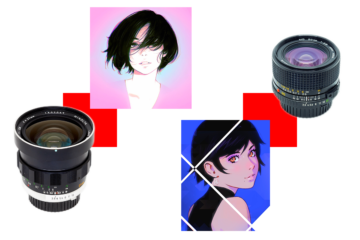Minolta MC Rokkor QD 135mm 1:3.5 – MC II – review

Minolta MC Rokkor QD 135mm 1:3.5 vintage manual lens review (Minolta MC Tele Rokkor-QD 1:3.5 f=135mm)
- Official classification: MC
- Collector’s classification: MC II, Hills &Valleys, Knurled
Small but very proud lens. Like many other lenses of that era, it is already very good in terms of performance, but in the next versions, it has been improved even more. The regular representative of ‘Hills&Valleys’ hull design.
Minolta MC Rokkor QD 135mm 1:3.5 specifications
| minolta.eazypix.de index | 188 |
| Name engraved on lens | MC TELE ROKKOR-QD |
| f[mm] | 135 |
| A max [1/f] | 3.5 |
| A min[1/f] | 22 |
| Lens design [el.] | 4 |
| Lens design [gr.] | 4 |
| Filter thread Ø front(rear)[mm] | 52 |
| Lens Shade | screw-in |
| closefocus[m/ft] | 1.5/5 |
| Dimension Ø x length [mm] | 63×88 |
| Weight[g] | 370 |
| Year | 1969 |
| Style | MC II |
| Code No. (ROKKOR-X) or Order No. | 567-1xx |
| Notes |
| Floating elements | NO |
| Aperture blades number | 6 |
| Confidence in the test results of reviewed copies | Enough high |
| Reviewed Lens SN: | 1592643 |
Minolta MC Rokkor QD 135mm 1:3.5 lens exterior
Minolta MC Rokkor QD 135mm 1:3.5 lens shade
Mounted on Minolta SR-T 101 camera, it’s a very suitable set – both are from the one era of design
Minolta MC Rokkor QD 135mm 1:3.5 sharpness
Сlose-distance resolution test, minimal distance
Testing methods description
- Target: 10-15 cm picture, printed on glossy photo paper
- Distance: 1.7m
- Camera: Sony A7II (24mpx, full-frame, tripod, remote control). M-mode, ISO fixed, WB fixed, SteadyShot – OFF.
- The test was repeated for every F-stop on every focus position with manual focus adjustment for each shot. That is to avoid the effect of field curvature.
- RAW processing: Capture One, default settings. All quality settings – 100%. Crops – 300×200 px
Original target image (printed in horizontal orientation on 10cm X 15cm glossy photo paper)
Scene preview
Test results
Long-distance resolution test
Testing methods description
- Target: cityscape
- Distance: > 200 meters to center focus point
- Camera: Sony A7II (24mpx, full-frame, tripod, remote control). M-mode, ISO fixed, WB fixed, SteadyShot – OFF. The focus point is on the center only.
- RAW processing: Capture One, default settings. All quality settings – 100%. Crops – 300×200 px
Scene preview
Test results
Minolta MC Rokkor QD 135mm 1:3.5 aberrations
Vignetting
Geometric distortion
Coma aberrations
Chromatic aberrations
Long-distance bokeh
Test#1
Test conditions: the lens was focused on 1.5m, buildings are on “infinity”-distance
Test#2:
Test conditions: lens was focused on 2.5m
Light bubbles bokeh
Test #1
The lens is on the minimal focusing distance 1.5m, lights are on infinity (cityscape)
Test #2
Test conditions: lens was focused on 2.5m
Minolta MC Rokkor QD 135mm 1:3.5 final conclusion:
Pros:
Firstly, and independently of test results, I want to say that this lens is very cheap. This is a real sign. It is so cheap that I think you can meet the sales like “three for the price of one”. Just kidding, but probably this is the cheapest Minolta lens on auctions. Secondly, it has the steel&glass construction and easy in support: the owner can perform CLA at home with a hammer and pliers.
Neutral:
About IQ: it has good overall sharpness at the center and middle positions but not at corners. It’s better to close it for F5.6 and it will become a totally sharp over the frame on F8. So, it can work well on APS-C cameras, but for ‘full-frame’ it’s maybe better to get another 135mm lens. In other aspects, it shows results which are typical for tele-lenses of that years – quite big aberrations and ideal creamy bokeh.
So, it seems that I wasn’t impressed by this Rokkor. It’s true. But I tend to believe that it’s just because as a tester I’ve had an experience with a few better and faster 135mm lenses, and this small beauty is just staying in the shadow of that monsters. To be honest, I’m not sure that a photographer will see the lack of performance if to use the lens for portraits, you know, a smooth rendering based on big aberrations helps in portraiture much more than sharpness at corners.
Finally, the recommendation is the same as for some other Rokkors from that era – there is no need to hunt for this lens, but use it without doubts if you got it.




































3 Comments
Mick Kemsley · 2022-02-08 at 20:29
I have just purchased the am lens, I have not tried it yet but it looks a little beauty, as I am at nearly 80 it is much lighter than my 2.8. Through ebay.
I have just found this source of information & I shall use it again.
Many thanks
Tony · 2022-02-08 at 20:49
You are welcome, Mick. I hope you’ll enjoy this lens
Charlier Luc · 2022-03-17 at 18:58
For nostalgic reasons, I always enjoy shooting argentic Minolta lenses. I was not even 10 y o when my dad let me use his own SR-1. I managed to get hold of MANY Rokkor lenses in the last 3 years, including 9 different versions of standard lenses (“prime”). I also use the TC 135 mm which is a TRIPLET (with characteristic images of this type of lens) and the plain MD 135 which is a classical “6 in 5”. This QD 135 is, as you well know, a Ernostar formula (see Elnarit 90 mm, Prakticar 50 f/2,4, Primoplan …). My copy is on its way to my mailbox. So, very different lenses altogether for very different results. Great fun.